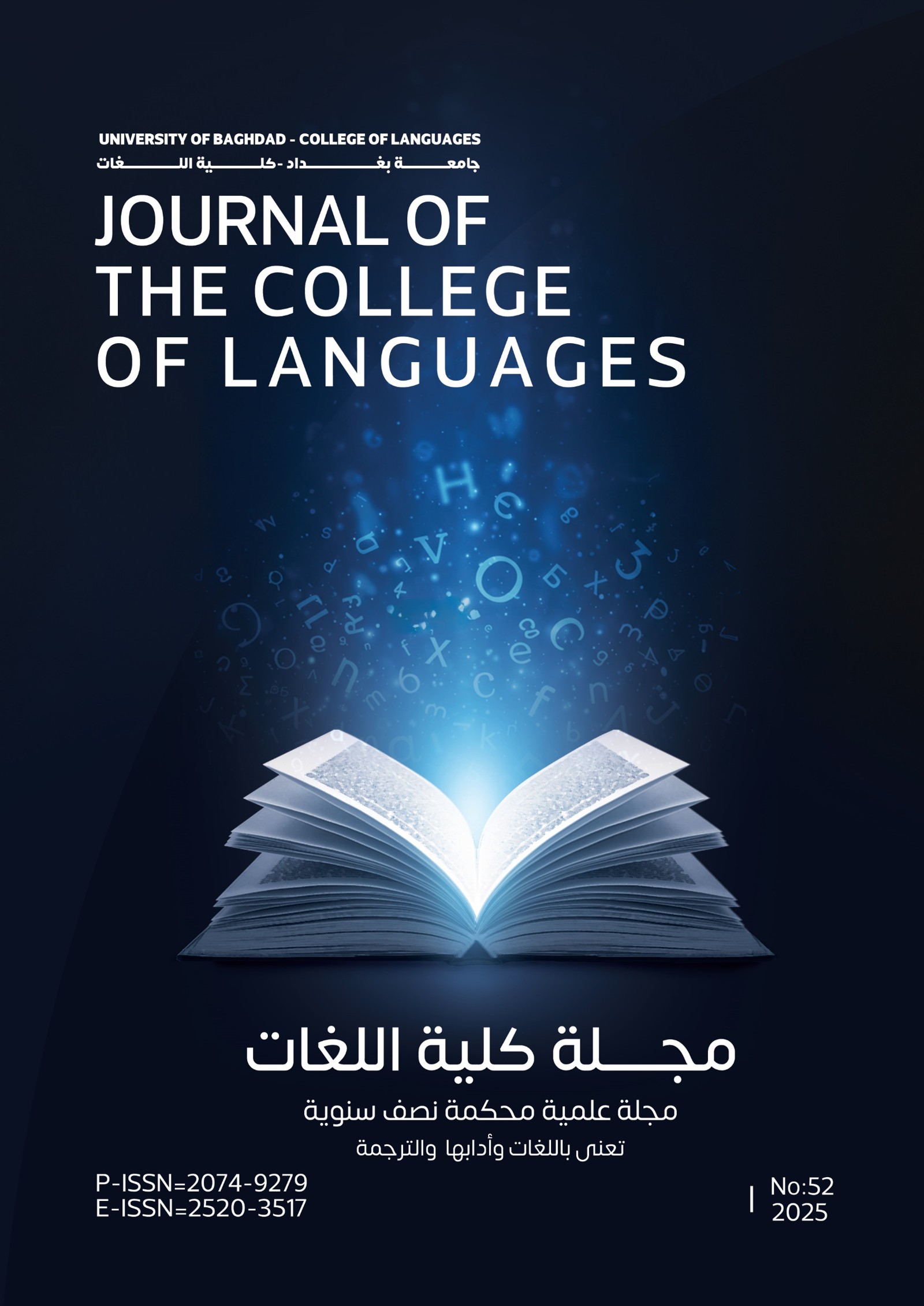Ironic Metonymy in Russian and Arabic
Ироническая метонимия в русском и арабском языках
DOI:
https://doi.org/10.36586/jcl.2.2024.0.49.0145Keywords:
Keywords: irony, metonymy, linguistic phenomenon, ironic metonymy., ирония, метонимия, явление, троп, ироническая метонимия.Abstract
This article is devoted to the cognitive study of ironic metonymy in Russian and Arabic. Metonymy and irony have traditionally been seen as parallel linguistic phenomena. But their formation and interpretation are based on different cognitive mechanisms. At the formal and functional level, metonymy and irony have a number of significant differences. Metonymy is an artistic technique, the mechanism of which is based on obvious, easily traced connections between objects and phenomena of the surrounding world. Irony is a satirical technique or a rhetorical figure that is used to create a certain artistic image, aimed at forming the hidden meaning of the statement. A native speaker intuitively feels the difference between metonymy and irony and expresses it in a linguistic form.
Аннотация
Данная статья посвящена когнитивному исследованию иронической метонимии в русском и арабском языках. Метонимия и ирония традиционно рассматривались как параллельные языковые явления. Но в основе их образования и интерпретации лежат разные когнитивные механизмы. На формальном и функциональном уровне метонимия и ирония имеют ряд существенных различий. Метонимия – художественный прием, в основе механизма которого лежат очевидные, легко прослеживаемые связи предметов и явлений окружающего мира. Ирония – сатирический прием либо риторическая фигура, которые используются для создания определенного художественного образа, направлены на формирование скрытого смысла высказывания. Носитель языка интуитивно чувствует разницу между метонимией и иронией и выражает ее в языковой форме. Имеют метонимия и ирония много общих характеристик с точки зрения семантики и коммуникативных свойств. Они представляют собой лингвистически двухслойные явления, в которых проявляется творческая функция языка.
Received on 26/4/2023
Accepted on 20/8/2023
Published on 2/1/2024
References
Arnold, I.V. (2002). Stylistics. Modern English. Moscow. Nauka.
Ermakova, O.P. (2014). “Is irony a speech genre? // Genres of speech”. Russia. Kaluga.
Moskvin, V.P. (2021). "The ambiguity of speech: a stylistic aspect". Bulletin of Tomsk State University. Philology, 70, 90-120.
DOI: 10.17223/19986645/70/6
Nikolyukina, A.N. (2001). Literary encyclopedia of terms and concepts. Institute of Scientific Information for Social Sciences: Intelvak.
Hamze, D. (2013). Communicative foundations of irony // Forms of social communication in the dynamics of human society development. London: IASHE.
Shilikhin, K.M. (2009). "Metaphor and Irony". Vestn. Voronezh. state university Ser.: Linguistics and intercultural communication, 2, 39-42.
UDC 81’42
Yartseva, V.N. (1990). Linguistic encyclopedic dictionary. Moscow. "SOVIET ENCYCLOPEDIA".
Al-Garhi, M. & Amin, M. (2007). Clear Rhetoric: Eloquence, Semantics, and Figurativeness. Jakarta: Rawdhat Faries.
Al-Jurjani, A. (1405). Selected euphemisms of writers and guidance rhetoric (1st Ed.) Beirut: A'alamul-Kutub.
Al-Razi, M. (1983). Mukhtar Al-Sahah. Kuwait: Darur-Risalah.
Al-Zarkashi, M. Proof in the sciences of the Qur'an. Beirut: Darul-Ma'rifah.
Almarai, A. (1993). Rhetoric sciences (meanings, statement, badi). i3. Beirut: Darul-Kutubi-I'lmiyah.
Ajlan, A. (1985). Pre-Islamic satire, its forms and artistic methods. Alexandria: University Youth Foundation.
Downloads
Published
Issue
Section
License
Copyright (c) 2024 Journal of the College of Languages (JCL)

This work is licensed under a Creative Commons Attribution 4.0 International License.








